Almost a third of new vehicles don't come with a spare tire, but sealant is only a temporary solution when you have a flat.
BY:
JULIE RAMHOLD
Senior Staff Writer/Consumer Analyst
Additional contributions by Sean Flynn.
Being prepared for a flat tire can mean being ready to pay up for a tow or keeping a spare on hand. But maybe you don't know how to change a tire. Or perhaps the tow is too expensive. Maybe you don't have a spare or even room for one — that could be where a can of Fix-a-Flat or other tire sealant comes in.
Does Fix-a-Flat ruin tires, though? We've taken a strong stance against tire sealant in the past, but after reading testimonials from readers, we started to wonder if we'd been too harsh. And the answer is: maybe. While we still don't recommend tire sealant for every flat you encounter, we think there are times when it's fine to use it.
Read on to see when it's okay to rely on stop-leak solutions like Fix-a-Flat, Slime, and other tire sealants, and why it might be in your best interest to call in the professionals instead.
One of the most obvious times to use a tire sealant is during an emergency. If you step out your front door one morning and discover a flat tire because of a slow leak, that's not as pressing as developing a flat tire on the road. If you are on the road and suddenly have a flat, that's when a can of sealant can be helpful. It's an especially good solution if you only have a small puncture and need to just patch it long enough to get to a mechanic for a tire replacement.
Flat tires can happen at any time, but if you experience one in an area where you can't safely change the tire, sealant may provide a good alternative. In fact, Wirecutter recommends keeping a can of Fix-a-Flat in your roadside emergency kit precisely for this reason.
SEE ALSO: 24 Items Worth Buying on the Northern Tool Website
Picture this: You're making a late-night trip and suddenly spring a flat tire. You don't have a spare available and are stuck on the side of the road in utter darkness. You try to call a tow truck, and it's going to be literal hours before someone can get to you. You can either camp in your car until it's light out and the tow arrives, or you can opt to use your can of sealant.
Changing a tire can sometimes take more time than patching a hole with sealant. So in some cases, you might be better off opting for that can of Fix-a-Flat, rather than trying to rush through swapping a flat for a spare. If you just don't have the time to throw on a spare, reach for that can of sealant to be on your way faster.
These products inject a sealant into your flat tire to seal the leak, and a gas to fill the rest of the tire. But sealants leave goo inside the tire, and it's a real hassle for tire shop employees to get all of it off the wheel when they do a tire repair — especially if it's dried on. That could cost you when it's time to replace the tire; worse, the substance could even damage an otherwise repairable tire.
But sealants leave goo inside the tire, and it's a real hassle for tire shop employees to get all of it off the wheel when they do a tire repair — especially if it's dried on. That could cost you when it's time to replace the tire; worse, the substance could even damage an otherwise repairable tire.
Tire sealants can potentially damage an otherwise repairable tire.
Sure, Fix-a-Flat's FAQ states its product "will not cause harm to most tires when used as directed." But which tires aren't included in that "most tires" caveat? Well, Fix-a-Flat notes that its sealant shouldn't be used in quiet tires, as those have a layer of foam on the tread area. Utilizing the product on these tires can result in the foam absorbing the sealant, which means it won't be able to reach the puncture for treatment. Fix-a-Flat also states that using the sealant on quiet tires could result in vibrations, and there's no way to remove the sealant from the foam — which means the tire will likely have to be replaced.
The company doesn't recommend the product for use in run-flat tires either, as they're designed to indicate a flat and still be safe to drive on for a short amount of time. Some run-flat tires also have a layer of foam like quiet tires, and will have the same issues as those if Fix-a-Flat tire sealant is used on them.
Tire sealant can freeze, making it unsuitable for some areas in the U.S. during the winter. Be cautious about how you store it, as Fix-a-Flat can freeze in temperatures under 32 degrees Fahrenheit. If the product does freeze, all is not lost, though you could have a heck of a time defrosting it. Fix-a-Flat recommends warming the can via your car's interior heater vent. However, if the product is in your tire and freezing temperatures are in the forecast, you should immediately take the vehicle to a professional to have the tire repaired.
SEE ALSO: 7 Ways You Can Lower Your Heating Bill This Winter
To be clear, Fix-a-Flat can't handle extreme temperatures at the other end of the spectrum either. The company recommends not storing it in temperatures over 120 degrees Fahrenheit.
The company recommends not storing it in temperatures over 120 degrees Fahrenheit.
As mentioned above, run-flat tires exist. According to research from AAA, 28% of 2017 model year vehicles didn't come with a spare. If you drive one of those cars or a newer model, there's a good chance run-flat tires are either on or available for your car. Depending on the tire type, they can allow you to drive cautiously on a flat tire for up to 100 miles without damaging your wheel. Nearly every new BMW, many Cadillacs, plenty of Mercedes, and even some Toyotas come with run-flats — just to name a few.
Tire sealant is only useful if you've got a slow leak in the tire or a small hole. If you suffer a more serious encounter — say, with construction debris — the tire goo will not save you. And in certain cases, you might not know if your tire is beyond repair until it's spewing slime all over itself on the side of the road — and maybe all over you.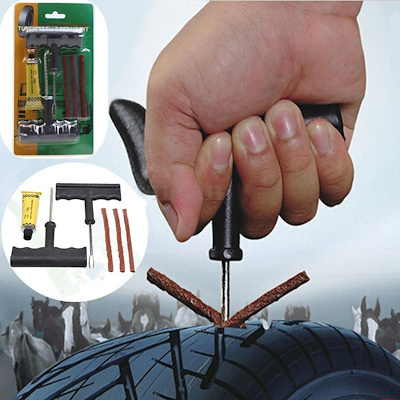
Every new car sold in the U.S. in the last decade or so has had a tire pressure monitoring system, which can alert you to a leaking tire before it becomes a critical issue. Tire sealants can clog your TPMS. If it's not cleaned promptly, this could ruin a sensor.
Tire sealants can clog your tire pressure monitoring system. If it's not cleaned promptly, this could ruin a sensor.
However, as Fix-a-Flat and other tire sealants aren't meant to be permanent, your TPMS should be safe as long as you have the treated tire repaired in a timely manner. Once you use a sealant, it's important to head to a qualified professional to get your tire repaired. While they're at it, they should also use water to clean off any sealant that may have come into contact with the TPMS device. When the repaired tire has been replaced and inflated, you should be able to reset the TPMS system so it resumes operating normally.
One thing to note, though: some tire sealant companies insist their product is TPMS-safe — and some car manufacturers specifically say not to use these sealants at all. Before storing a can for emergency use, check your vehicle's manual to see if they're okay to use.
Before storing a can for emergency use, check your vehicle's manual to see if they're okay to use.
If you're a motorcycle rider, tire sealants aren't a great idea. Tire sealants like Fix-a-Flat and Slime are intended for use in the tubeless tires found on cars and trucks. Some motorcycle tires still have tubes, and the goo won't even seal a tube leak, much less keep it closed. Further, throwing the wheel balance out of whack is more dangerous on a motorcycle than a car.
Even sealant brands such as Fix-a-Flat warn against using their products on motorcycles.
Manufacturers once used dimethyl ether for the gas in Fix-a-Flat tire sealant, and that compound is highly flammable. Road debris stuck in your tire could create sparks, potentially igniting that compressed gas. Luckily, this isn't the case anymore.
SEE ALSO: These 8 Items Tend to Sell Out: Here's What to Buy During a Supply Shortage
Any canned compressed gas is dangerous if you throw it into a fire. But manufacturers have generally switched to using HFC-134a (or a comparable propellant) in tire sealants, which is nonflammable. If you've got an ancient can of sealant lying around, dispose of it carefully. But if your tire sealant uses a nonflammable gas like HFC-134a, there's no need to worry about explosions.
But manufacturers have generally switched to using HFC-134a (or a comparable propellant) in tire sealants, which is nonflammable. If you've got an ancient can of sealant lying around, dispose of it carefully. But if your tire sealant uses a nonflammable gas like HFC-134a, there's no need to worry about explosions.
Fix-a-Flat even notes that the product is nonflammable.
Ready to shop? Check out the best automotive deals now!
Julie Ramhold
Senior Staff Writer/Consumer Analyst
Julie's work has been featured on CNBC, GoBankingRates, Kiplinger, Marketwatch, Money, The New York Times, Real Simple, US News, WaPo, WSJ, Yahoo!, and more. She's extolled the virtues of DealNews in interviews with Cheddar TV, GMA, various podcasts, and affiliates across the United States, plus one in Canada.
DealNews may be compensated by companies mentioned in this article. Please note that, although prices sometimes fluctuate or expire unexpectedly, all products and deals mentioned in this feature were available at the lowest total price we could find at the time of publication (unless otherwise specified).
Please note that, although prices sometimes fluctuate or expire unexpectedly, all products and deals mentioned in this feature were available at the lowest total price we could find at the time of publication (unless otherwise specified).
Should you use Fix-a-Flat? Is it any bad? All these questions are often stuck in many drivers’ heads, especially those who are new to the car-repairing world. Fortunately, this article contains the answers to clear out all your confusion about this well-known liquid tire sealant.
This container of tire sealant contains the liquid injected into your tire in addition to the extra air. After entering the tire, the slime solidifies against the interior and, ideally, seals the hole.
So, will Fix-a-Flat inflate a tire? Yes. This product can only repair punctures of a quarter of an inch at maximum and fill your inflated tire with sufficient air so that you can drive to the nearest repair center.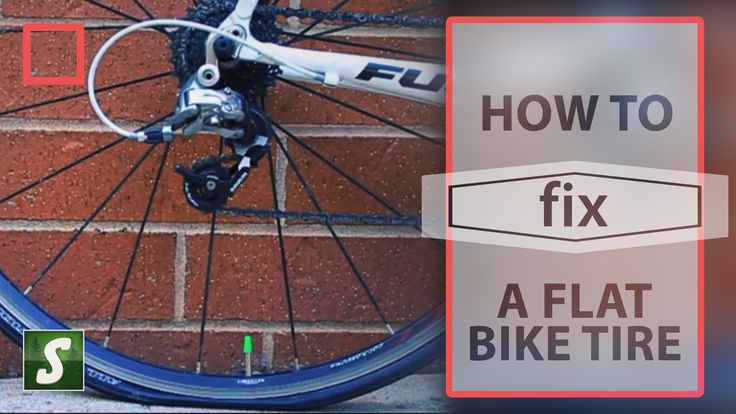
It is supposed to allow you to travel home or to the nearest air pump or tire shop. Notice to drive the vehicle for only 2-4 miles before stopping at a fuel station or using a tire inflator to fill the tire with the appropriate quantity of air pressure.
How To Use Fix-A-FlatDon’t know how to use this flat tire repair kit? Here is the step-by-step guide.
Step 1: Park Your Car At A Safe Area.
Many modern vehicles come with a TPMS (short for Tire Pressure Monitoring System), which monitors tire pressure and alerts the driver when a tire goes flat. If you see this warning sign illuminating on the dashboard, park your car in a secure area, such as a parking lot or by the side of the road.
Step 2: Find The Leak Spot.
It’s critical to locate the leak spot as soon as you realize your tire is losing air. Numerous things, including road debris, pointy objects, and extreme tire wear, might result in airless tires.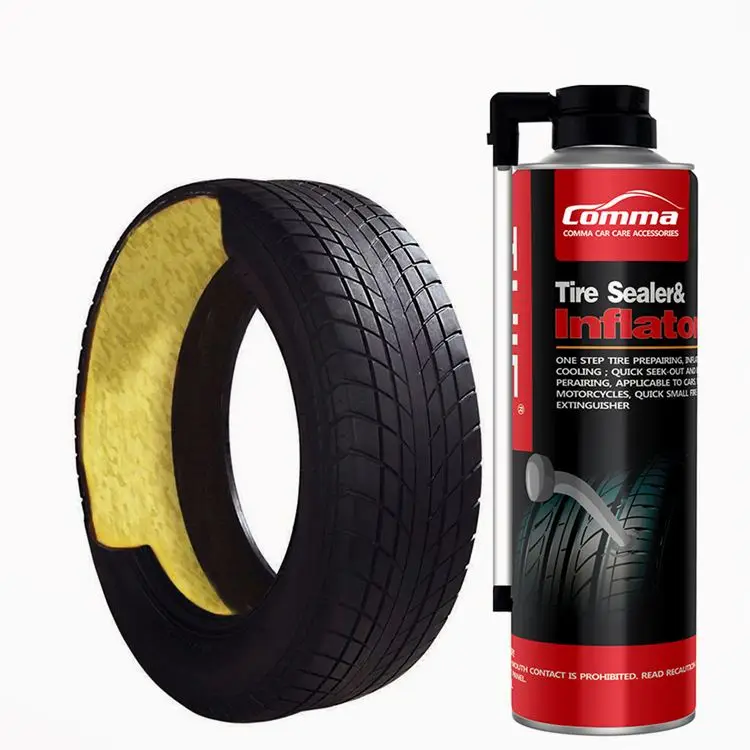
Suppose the puncture is bigger than 1/4 inch; Fix-a-Flat can’t help you, and you need to call roadside assistance or tow truck to solve the problem.
Step 3: Open Your Tire Valve.
Once you find the leak spot and know that it’s fixable with Fix-a-Flat, the next thing to do is remove your tire valve cap’s screws and store it somewhere secure and easy to find.
Step 4: Use Fix-A-Flat.
First, shake the Fix-a-Flat can before use. Then, screw the can’s nozzle onto your tire valve tightly. The can will begin airing up the tire once its nozzle is in position. Keep in mind that Fix-a-Flat should only be used once, so fill just one tire with the entire can.
Step 5: Shut Your Tire Valve.
Unscrew the Fix-a-Flat nozzle and screw back your valve cap after the tire has been entirely filled with the can’s contents.
Step 6: Head To The Road Immediately After Using The Sealant.
Drive your automobile right after applying Fix-a-Flat.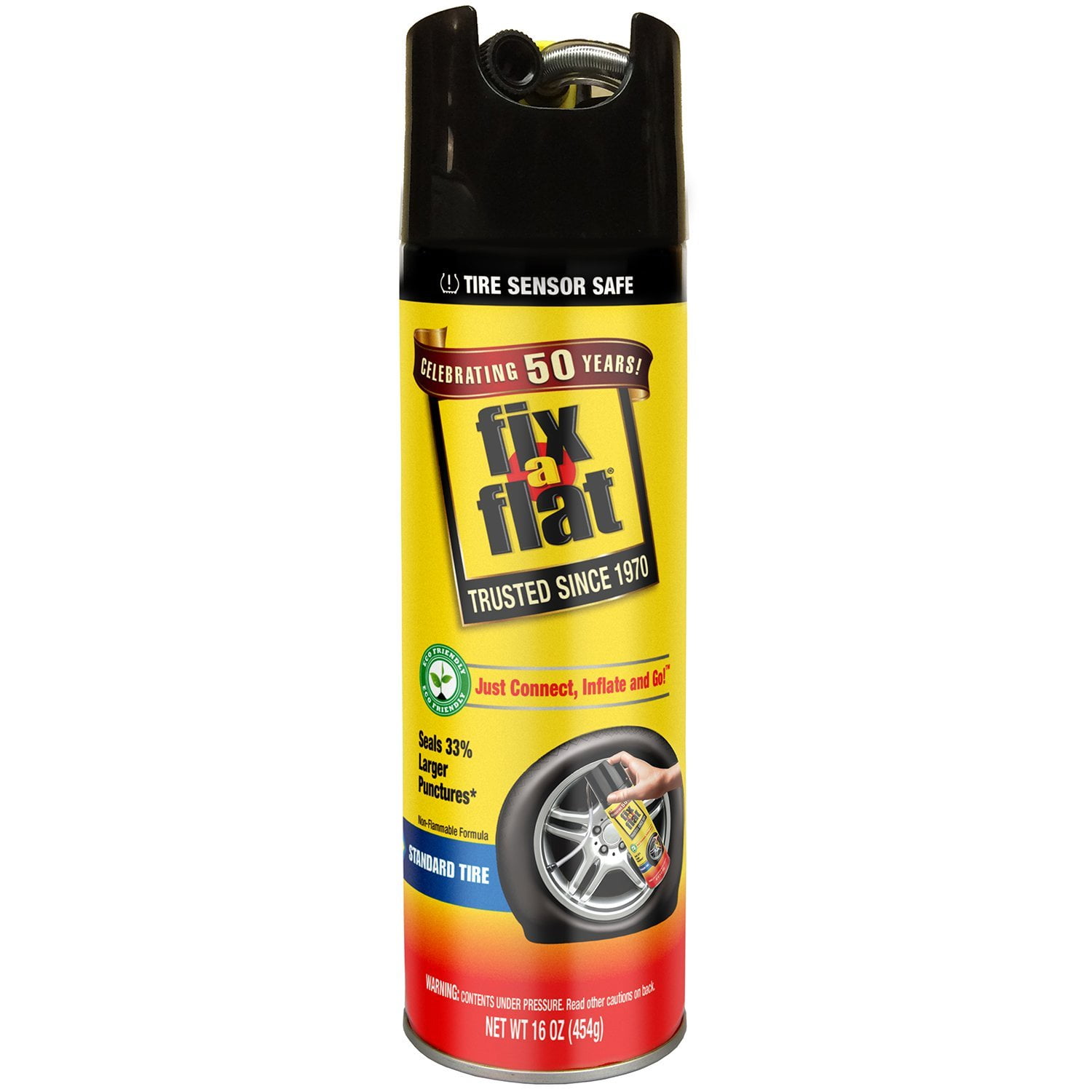 This way, the tire pressure will be raised, and the sealant will be distributed more evenly within.
This way, the tire pressure will be raised, and the sealant will be distributed more evenly within.
Still, notice that your car should only go for about 2-4 extra miles after applying the product. Then, it would be best to bring it to a local tire repair center and get the problem solved permanently.
Is Fix-A-Flat Worth It? Does It Ruin Tires?It will not ruin your tires!
But based on your current situation, this fix may be worth it or not. In some circumstances, the Fix-a-Flat product undoubtedly fixes a flat automobile tire, but this is not the best remedy. Below are the pros and cons so that you can make your own judgment.
Pros
Cons
Fix-a-Flat does work for small fractures.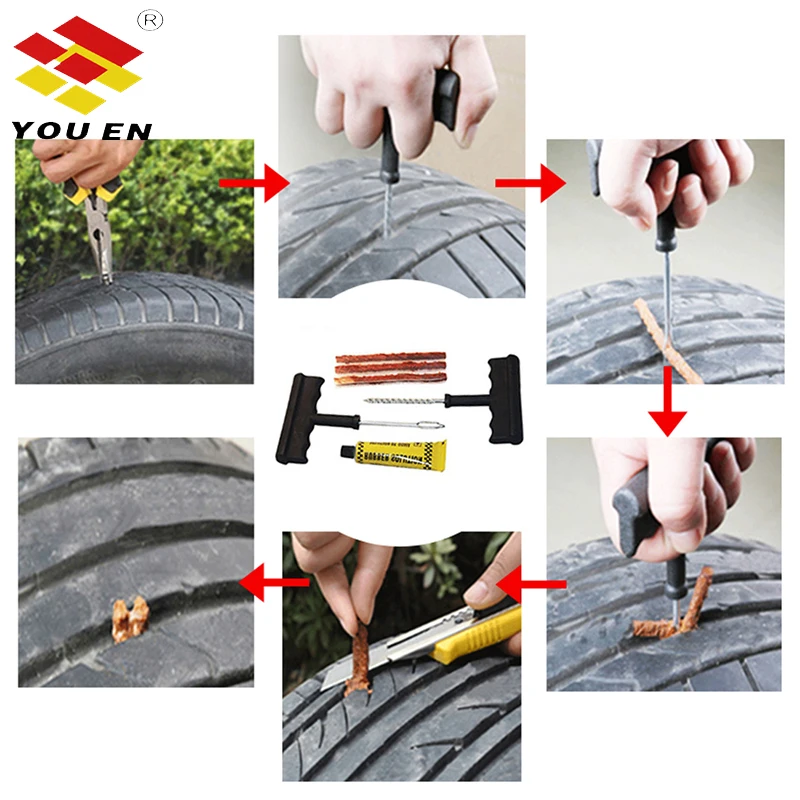 Although using this sealant can be an effective solution, there are some cautions you need to keep in mind.
Although using this sealant can be an effective solution, there are some cautions you need to keep in mind.
Fix-a-Flat can’t ensure a uniform distribution of the chemicals within your tire despite using centrifugal force to spread them.
The inner of the tire may develop heavier areas, which would tip the balance. Because of the uneven weight, the tread will wear unevenly, which can lead to hazardous driving conditions, particularly in the snow or rain.
Affect The TPMS (Tire Pressure Monitoring System)The TPMS senses your tire’s air pressure level through a small hole. When you use Fix-a-Flat, there is a high chance that this hole will be sealed off permanently.
The mechanics may be able to clean the sealant out, but that is not always the case. This means you are at risk of having your TPMS not functioning properly.
Ruin The Tire RimFix-A-Flat initially seems like a liquid but quickly turns into an extremely stiff, dry foam.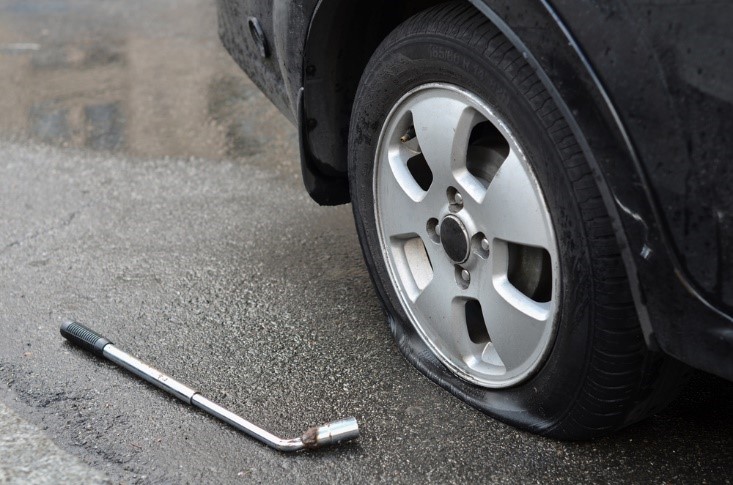 It will cover your rims completely, and removing it requires a lot of work. If it is left on there for an extended period of time, the integrity of your rims will eventually be harmed.
It will cover your rims completely, and removing it requires a lot of work. If it is left on there for an extended period of time, the integrity of your rims will eventually be harmed.
Fix-A-Flat is a water-based sealant and contains R134A, the same propellant that your car’s air conditioner uses. R134A and water will have corrosive reactions when combined.
The result has the power to eat through rubber, paint, and aluminum, as the sealant chemical attaches to the tire by slightly corroding the rubber. This chemical weakens, albeit slightly, the strength of your tire.
Frequently Asked QuestionsIs Using Fix-A-Flat A Permanent Solution?No. This tire sealant kit is only a stop-gap. Its sole purpose is to keep you moving until you reach a tire shop to get the tire properly fixed. It won’t help you if you experience a “blow-out,” which typically entails the tread coming away from your tire and having significant leak hole sizes.
In terms of shelf life, this sealant can last for 2 years after the date of manufacturing. The manufacturer warrants that, when used in accordance with instructions, this product will satisfy specifications for 90 days following the date of purchase.
Can I Use Fix-A-Flat To Fix Holes In Run-Flat Tires?No. It is not recommended to use this product for fixing holes in run-flat tires. Since the construction of these tires was made expressly to show a flat and yet be safe enough to drive on for a short time, they are not intended to be sealed with tire sealant.
Is Fix-a-Flat bad for car tires? Hopefully, you have figured out the answer after reading this article. One thing you need to remember is that this is only a temporary emergency tire repair; you will still need to visit a repair facility to have the damaged tire fixed.
See more:
- How Long Does A Patched Tire Last?
- Why Is My Tire Pressure Light Blinking
- Is 40 Psi Good Tire Pressure?
Auto repair ,
Each of the drivers may have such a situation when a tubeless tire deflated on the way, but the spare tire was not in the car, or this is already the second wheel for a long road.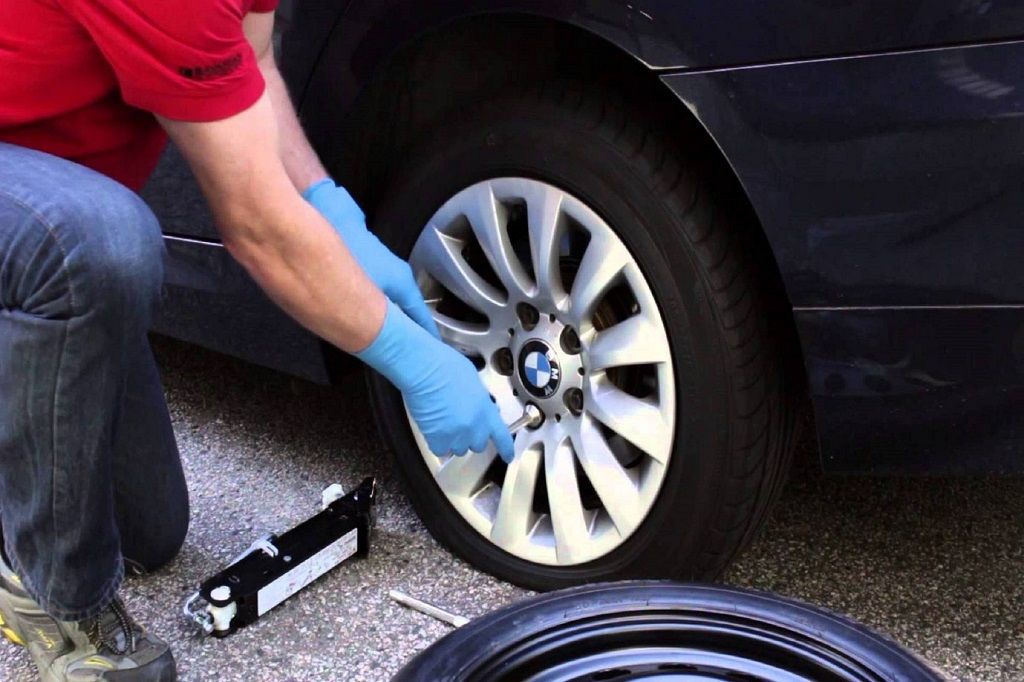 In this case, there are only two ways out - one way or another, wait for help from others (take the wheel to a tire fitting, call to bring a spare tire, call a tow truck, etc.), or you can repair a punctured tire yourself.
In this case, there are only two ways out - one way or another, wait for help from others (take the wheel to a tire fitting, call to bring a spare tire, call a tow truck, etc.), or you can repair a punctured tire yourself.
Before moving on to the very topic of the question, it is worthwhile to carefully study all aspects of the operation of tubeless tires, but their widespread use has unequivocally proved that they have a clear advantage over chamber wheels.
The main advantage for the driver is the ease of repair, because if a wheel with a chamber is punctured, it will have to be removed and disassembled in order to remove the chamber, and only then carry out the repair itself, and then you will have to do laborious work (if it is done without special equipment) in reverse order. Tubeless tires, in most cases, can be repaired without dismantling the wheel, and without even removing it from the car.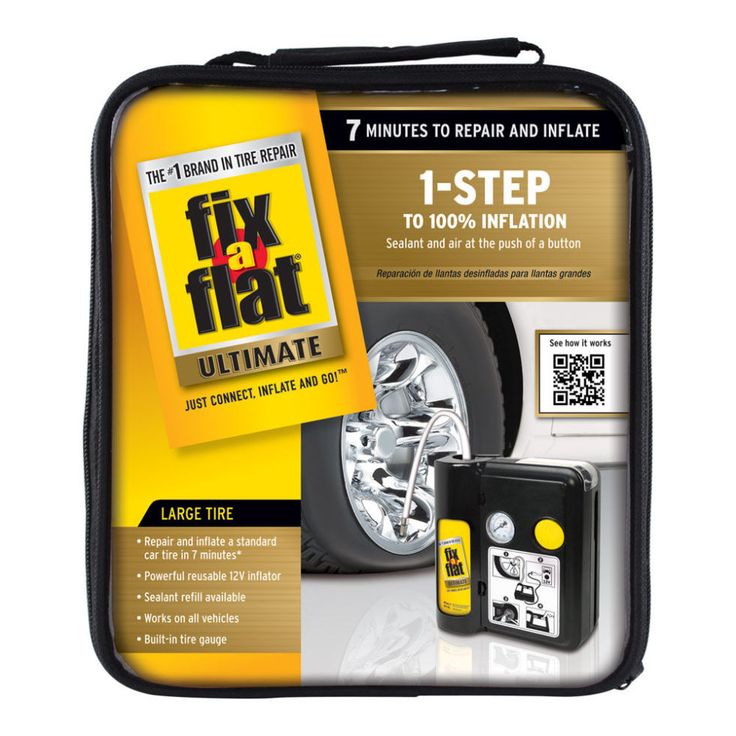
In addition, when punctured, a tubeless tire deflates for a long time, and sometimes drivers ride with several nails or self-tapping screws in the wheel without noticing the problem for up to several months. Therefore, if necessary, you can pump up a wheel with a puncture and have time to get to the nearest tire service.
However, there are several nuances that complicate operation. For example, with a strong impact on the edge of a pit or a curb, the tire can depressurize and instantly deflate, or if the wheel is not completely deflated, it can disassemble during a turn, which will lead to an instant descent.
Also, such a wheel is very difficult to inflate with a conventional pump or a mobile compressor, if it is disassembled (flew off the disk), in this case a professional compressor with high pressure is needed.
Usually, this procedure does not cause any particular difficulties, and the puncture site is easily detected by visual inspection due to the culprit of the damage, which remains in the tread.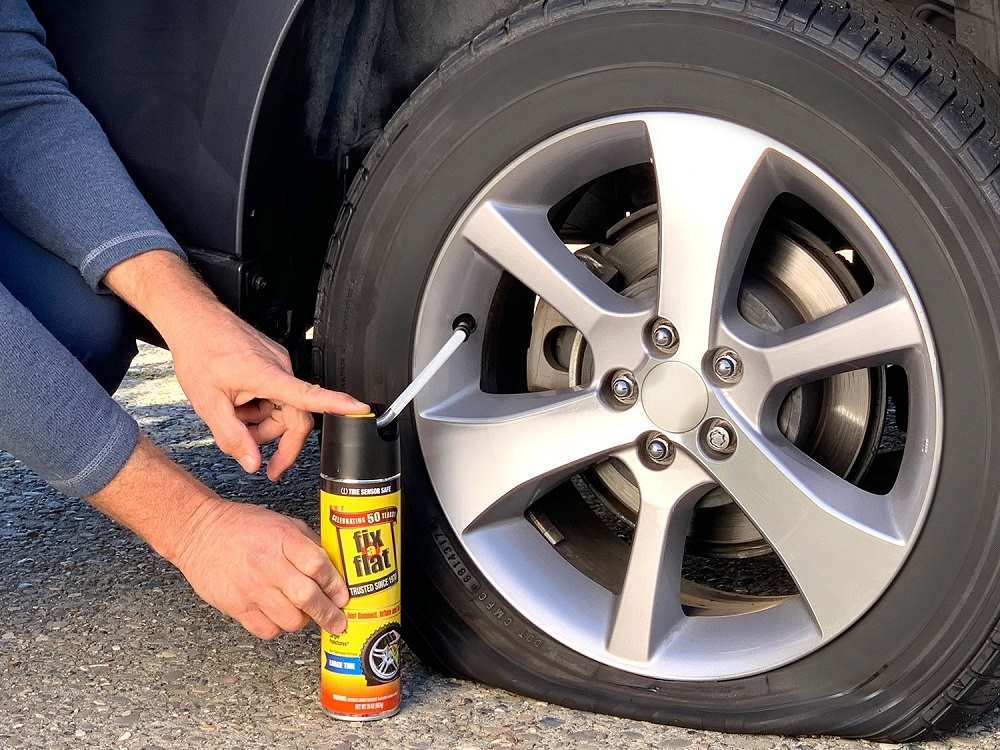
Alternatively, a soapy solution of any soapy liquid or plain water may help. By pouring on the tire with our “puncture indicator”, you can quickly find the required place by the emerging air bubbles.
But in the case when there is no soap or water, you have to carefully inspect the tire, while listening to hissing and trying to find the puncture site with your hand. This method helped me repeatedly in deaf and deserted places.
Using tubeless tire repair sealant is the easiest and fastest way to repair a wheel and get to a professional tire shop. If you do not have such a can, then we advise you to buy it, sooner or later - it will save your nerves, time and mood.
And so, if there is a nail or screw left in the tire, then it should not be removed immediately, first we connect the bottle with sealant to the nipple and if the bottle is new, then we completely inflate the wheel, if there is already insufficient pressure left in it, then before repair will need to pump up the wheel to at least 1 atmosphere.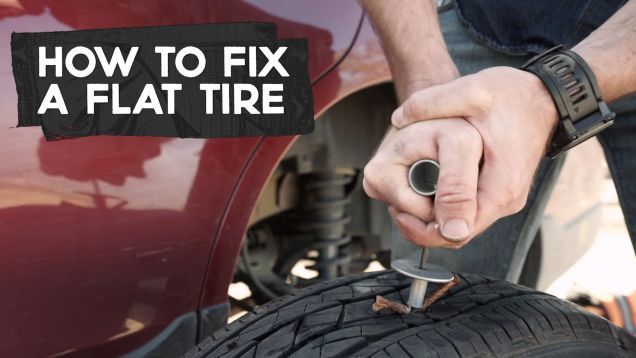
After the sealant is pumped into the wheel, it is necessary to remove the foreign object, and the sealant under air pressure will seal the puncture site from the inside, but remember that this method of repair is temporary, and it will last for about 100 km, which is enough for a visit tire fitting.
It should also be remembered that the use of sealant disturbs the balance, and you cannot drive fast on such a wheel, the safest speed will be about 60 km / h.
This method is the most correct for emergency road repairs. Similar kits are sold in any automotive store, and even in any large supermarket. The kit usually includes a special awl to expand the puncture, a hook for the lace, the laces themselves with bituminous impregnation and, in some cases, glue.
Before carrying out repairs, in order not to spoil the integrity of the cord (the inner hard part of the wheel made of steel wire and nylon thread), it is worth reducing the pressure to 1 atmosphere. Then you should use an awl to clean and widen the hole, without which you will not be able to insert the lace. But you should not immediately remove the awl from the hole, otherwise the tire will release all the pressure and insert the lace will not work.
Then you should use an awl to clean and widen the hole, without which you will not be able to insert the lace. But you should not immediately remove the awl from the hole, otherwise the tire will release all the pressure and insert the lace will not work.
Then you should put the cord into the eye of the hook, distributing it equally on each side, after which the awl is taken out and the hook with the cord is put into the hole formed, here you should treat the action carefully and not overdo it. The lace should go into the tire about half or a little more (the sealing harness should be folded in half).
After that, it is necessary to pull out the hook with one sharp movement, while the tourniquet will remain in the tire. Repair can be considered completed after cutting off excess pieces of lace and pumping the wheel to the required pressure.
It is worth noting that when using high-quality sets, this repair is considered to be complete and the puncture will be securely closed until the end of the wheel's service life.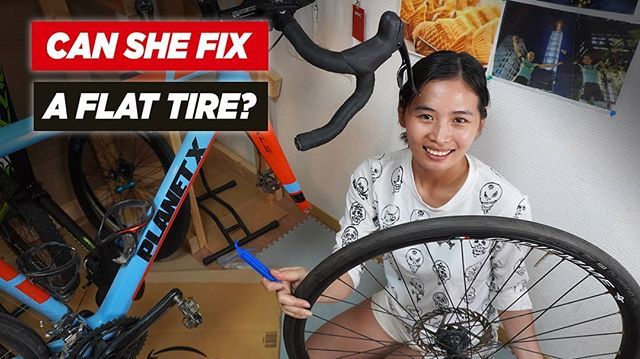 The only thing that may be required is balancing.
The only thing that may be required is balancing.
However, if the damage to the wheel is serious, then you will have to take care of buying a new tire. Recall that it is forbidden to repair cuts on the wheel, such a wheel is no longer allowed for operation even as a spare. Therefore, it is better to choose a cheaper tire than to pay for the repair of a cut, especially since today you can choose a new wheel even through your phone or from your home computer by visiting a specialized website. For example, one of these sites is the online store of tires and disks Internet-shina.ru at http://www.internet-shina.ru. 9
© 2007-2023.
The CarsWeek online publication was registered with the Federal Service for Supervision of Communications, Information Technology and Mass Communications (Roskomnadzor) on April 25, 2017.
Registration certificate EL No. FS77-69477. Founder: Sergey Grigoryevich Bogachkov. Chief editor: S. G. Bogachkov.
Founder: Sergey Grigoryevich Bogachkov. Chief editor: S. G. Bogachkov.
Editorial e-mail: [email protected]. Editorial phone: +7-915-979-14-25.
The use of site materials is allowed only with the installation of an active hyperlink to CarsWeek.ru. 16+
The longer you drive on a flat tire, the more likely it is that you will have to buy a new one. The expert told how to avoid it.
Regular pressure control systems help to determine a wheel puncture even at the initial stage. Very convenient and safe! Now they are installed even on relatively inexpensive models. A warning is displayed on the instrument panel and an audible alarm sounds. Automation "learns" about insufficient pressure either by changing the speed of the lowered wheel, or by a sensor located inside the tire.
The first option is simpler and more reliable. Even when installing tires of different diameters on the front and rear axles, you can “explain” to the system that this is how it should be. There are no problems with seasonal changing shoes.
There are no problems with seasonal changing shoes.
Problems can arise with the second system, for example when fitting tires. Servicemen often damage sensors. But such diagnostics monitors not only pressure, but also the temperature inside the wheel. And it can warn of the beginning of tire failure or a wedged brake mechanism that causes excessive heat generation.
Built-in pressure, acceleration and temperature sensor, radio transmitter and battery. The standard wheel valve serves as an antenna.
New fee for drivers in 2022 The best way to save your nerves and money is to subscribe to your favorite magazine Fines will be tied to the minimum wage (or other calculated indicator)
You can install a system for determining tire pressure yourself. There are two types of such devices on sale. The first ones are screwed onto the threads of standard valves, the others are installed inside the wheels.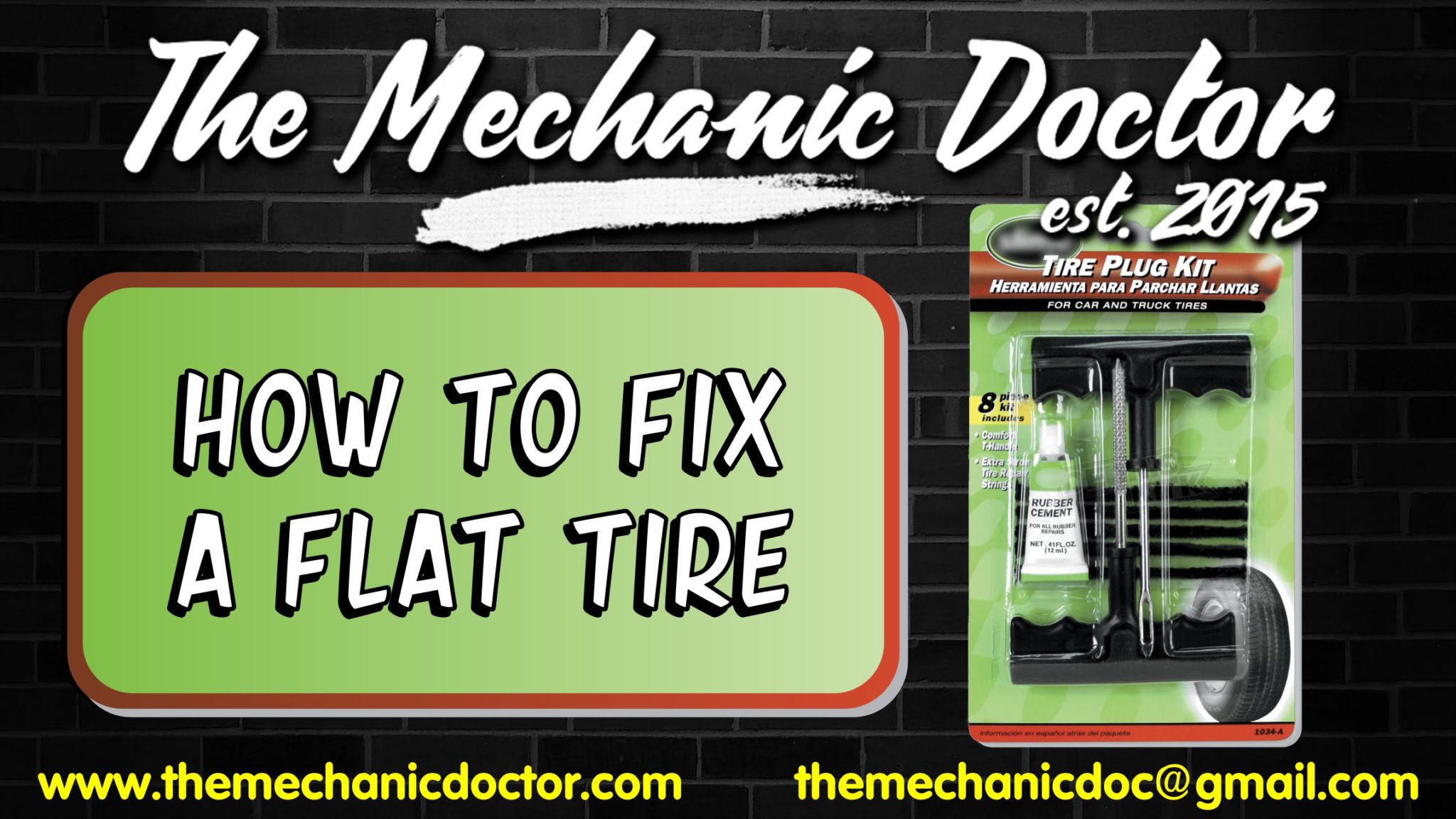 In both cases, all four sensors transmit information via radio to the unit in the car, which is powered by the on-board network or its own batteries.
In both cases, all four sensors transmit information via radio to the unit in the car, which is powered by the on-board network or its own batteries.
One of the options for installing a tire pressure monitoring system: caps with sensors and transmitters and a display unit.
The most common way to determine tire pressure loss is sensory. When the driver relies on his feelings.
I will list the factors that affect the accuracy and speed of this process.
Weather conditions. In heavy rain, snow, ice, when all the driver's attention is focused on keeping the car on the road, the likelihood of detecting a flat tire is less. The driver will not feel the decrease in car overrun, which is inevitable in case of a puncture.
Driving experience and vehicle feel. A novice driver, and even on an unfamiliar car, may not notice a puncture for a long time. Some experienced drivers even have time to lower the electric mirrors briefly to inspect the rear tires.
Tire profile height. The higher the tire profile, the easier it is to detect a puncture. If a tire with a profile of 65% or more is flat, the car is noticeably warped. On tires with a profile of 45 or less, it is almost impossible to feel a puncture. But the rapid loss of pressure on a high-profile tire is more dangerous than on a low-profile one.
A punctured front wheel is easier to identify - the steering wheel starts to pull in its direction. And the car leans in the same direction.
A flat rear wheel can also be detected by the tilt of the vehicle. In addition, when turning, the stern begins to skid.
In the city the speeds are low and it is usually possible to stop quickly and thus save the tyre.
And on the highway, many drivers know about a puncture only by the sound, reminiscent of flapping wings. And by the time you hit the curb, the tire is usually chewed up and unusable.
Owners of vehicles without tire pressure monitoring systems should check their tires more often with a pressure gauge.